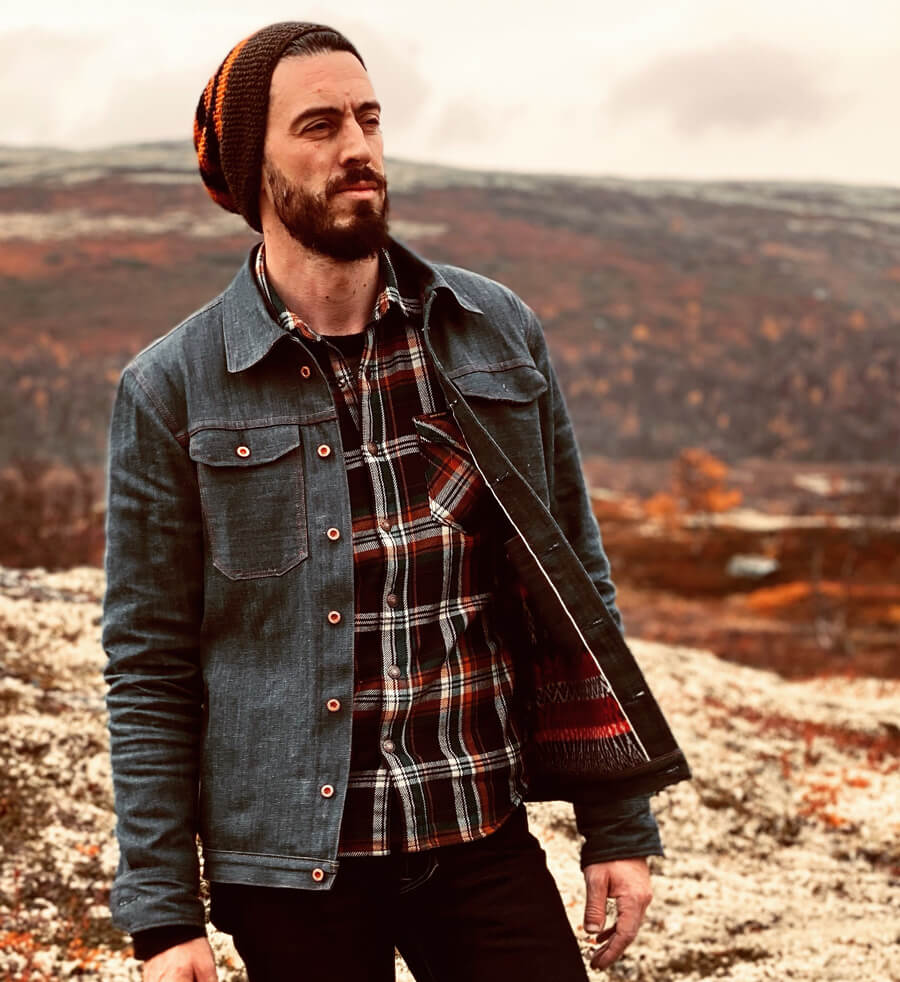The Return of Wide-Legged Jeans: What We Can Learn from J. Crew’s Giant Chinos
Baggy is back. Since at least the middle of the last decade, designers have been toying with wider legs, but these looks have been slow to transition from the catwalk into the fashion mainstream. Here on Main Street, we’ve held on tight to our slim-fitting jeans and chinos, but, since 2020, that grip has begun to loosen.
Baggy is back. Since at least the middle of the last decade, designers have been toying with wider legs, but these looks have been slow to transition from the catwalk into the fashion mainstream. Here on Main Street, we’ve held on tight to our slim-fitting jeans and chinos, but, since 2020, that grip has begun to loosen.
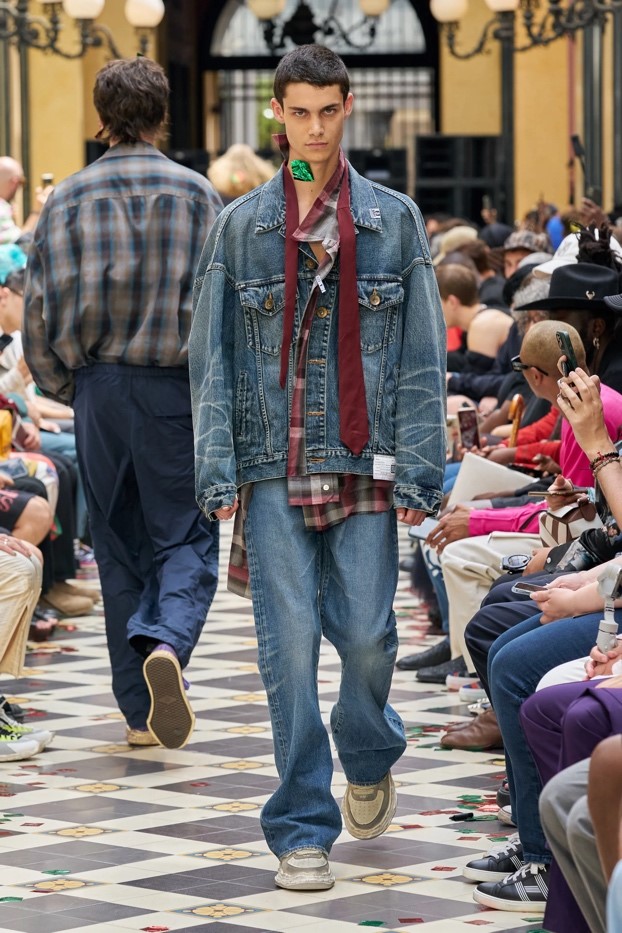
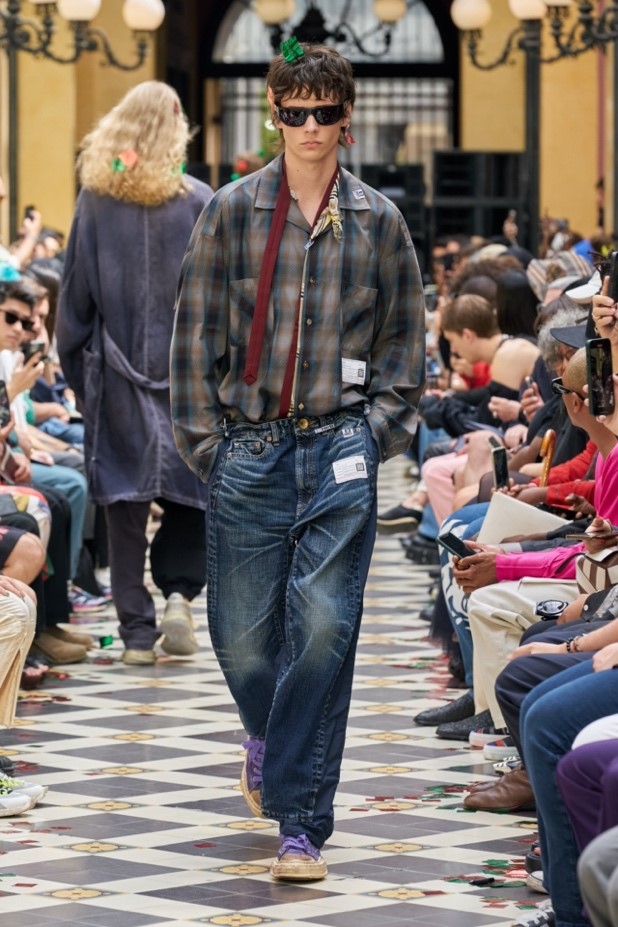
**2022 Maison Mihara Yasuhiro – Photos by Daniele Oberrauch of Gorunway** The massive and sudden increase in remote workers at the start of the pandemic made comfortable clothes king. Many of those who enjoyed the convenience of remote work have resisted a return to the office, and just so, the Zoom-friendly, comfort-first styles that spread so rapidly at the beginning of the pandemic have stayed with us, transitioning from private to public spaces with ease. We have returned to the glory days of baggy fits: the early ‘90s. Hip hop trendsetters drove a widespread adoption of baggy workwear that spread from the inner cities to the suburbs. In the second half of the decade, though, the style was taken to new heights (or widths) in the electronic underground and the skate parks. Legs became comically wide, concealing the body beneath yards of unnecessary fabric. Denim designers targeting these young consumers found and then exceeded the tipping point (JNCO might ring a bell). Especially when paired with frosted tips, candy necklaces, and soothers, the style was simply too ridiculous to last.
A handful of designers may be testing the limits again with pegged parachute-pants and floor-sweeping phat pants, but these have virtually no chance of catching on in any significant way (I’ll eat my words if they do). What do have legs, so to speak, are the wider cuts that are starting to appear in mainstream fashion outlets, with one familiar name leading the way: New England prep stalwart J. Crew. It was just a few years ago, in May of 2020, when J. Crew filed for Chapter 11 protection in federal bankruptcy court. The financial troubles had not exactly fallen on the brand like a thunderbolt. J. Crew had been underwater for years, struggling with massive debt coupled with a waning relevance.
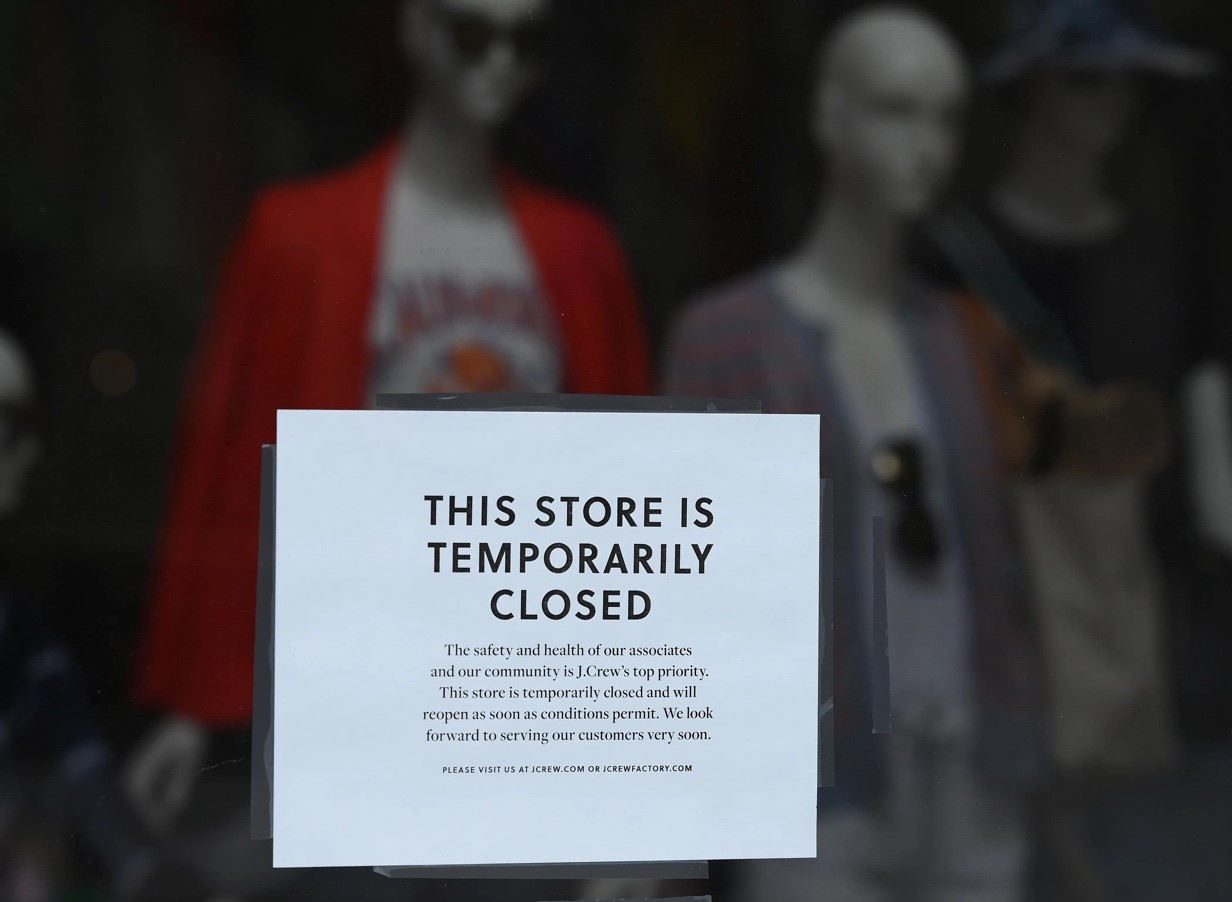
**Photo by Angela Weiss** The global pandemic pushed them over the brink. Their first attempt to pull themselves out of financial trouble was to move themselves to the deep rut in the middle of the road. Under the leadership of CEO James Brett and Chief Design Officer Johanna Uurasjarvi, they submerged themselves entirely in the tepid bathwater of mass appeal. They re-released what menswear writer Derek Guy calls “the Gapppiest items from their archives” and tried to make their clothes cheaper and easier to purchase online. Nothing worked. A long 16 months later, the Brett-Uurasjarvi duo were sent packing and new blood was brought in. For the chief menswear design job, J. Crew recruited Brendon Babenzien, former Creative Director at Supreme. Key to his success as a designer has been his ability to make what is old new again. “I like the classics,” he says. “[I like] altering them or thinking about them in a way that they weren’t thought of before, rather than something being only good for a season or two.” He has a seemingly preternatural ability to tap into the unspoken preferences of young and affluent consumers (who used to butter J. Crew’s bread), and he demonstrated this with his first J. Crew collection.
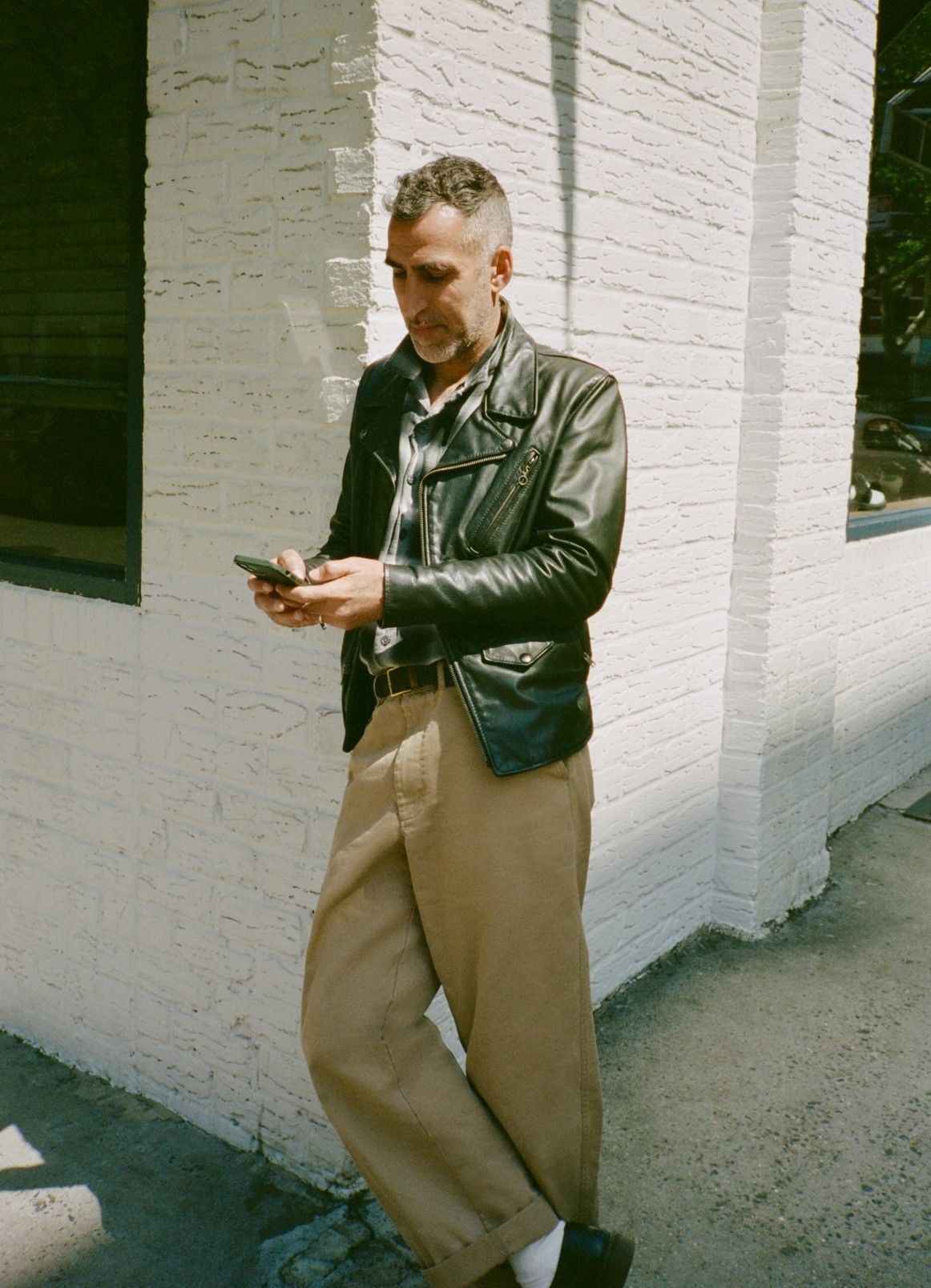
**Brendon Babenzien modeling his new J. Crew collection** What captured the most attention in the collection were the Giant Chinos, a wide- and straight-legged classic cut more amply than just about anything since the heyday of baggy fits in the ‘90s. Babenzien pulled the chinos from J. Crew’s ‘90s archives, updating them slightly to make them a comfortable fit for the present moment.
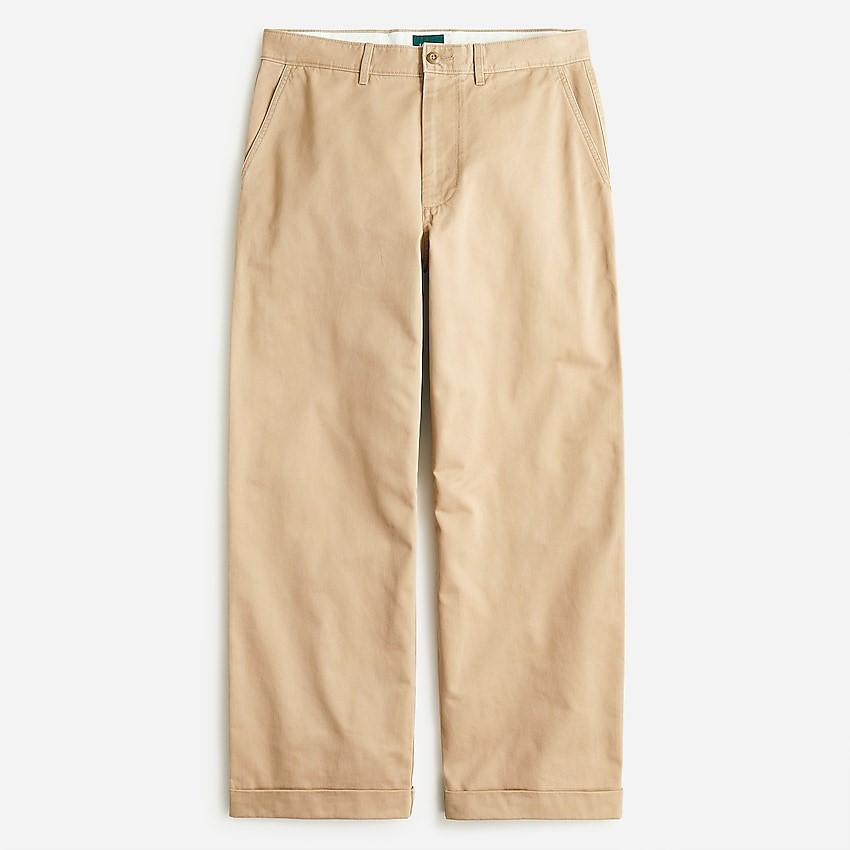
**J. Crew’s New Monster Chinos** They were no sooner released than they were sold out, suggesting both that the response was more enthusiastic by far than J. Crew were expecting and that there is a deep appetite for wider and more comfortable fits. This hunger is emerging, not at the margins, not among teenage fashion subcultures, but at the very center of contemporary and adult men’s style. With Babenzien’s help, J. Crew has found a way to address themselves to this middle market. They’ve found success and a brand renaissance at the edge of the menswear cleavage. On one side of the fracture, the sameness of mall clothiers; on the other side, a fractured enthusiast market with hard-to-please consumers. They’ve tipped their noses into the space occupied by fashionable workwear brands like Aimé Leon Dore, but at a much more attractive price point.
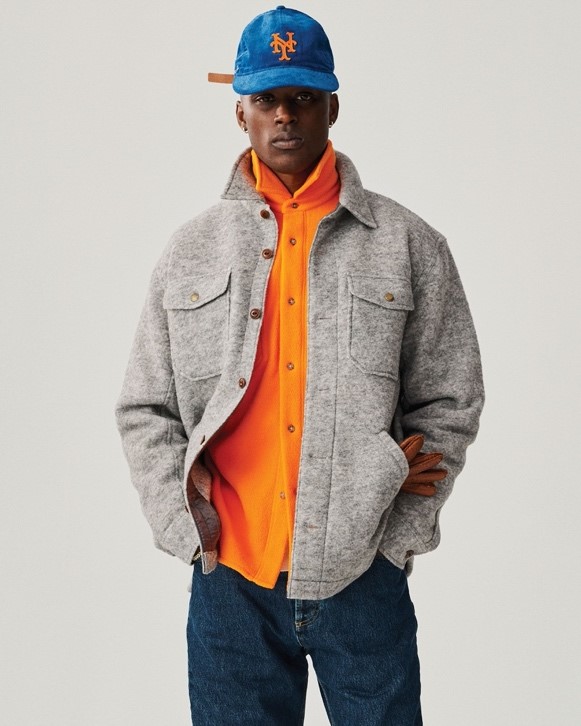
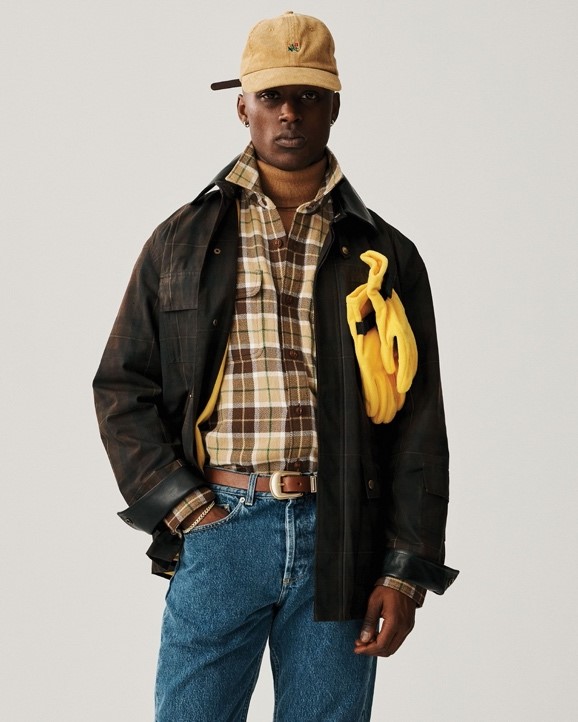
**Two New England workwear looks from Aime Leon Dore’s FW22 Lookbook** This can only be good news for heritage-minded denim brands, who have long kept wide-legged vintage reproductions near and dear to their heart. Babenzien and J. Crew haven’t created a space in the market so much as they have found a way to satisfy an existing but untapped need. It’s not yet certain if the preference for wider cuts is here to stay or if it’s a here-today-gone-tomorrow fashion trend like so many others, but denim brands that can be quick movers should be moving quickly to capitalize on the trend.

**Full Count’s 0105** Of course, the resurgence of baggier fits doesn’t represent any kind of threat to brands who walk the straight and narrow line of slim and tapered cuts. The menswear and denim markets remain impervious to consolidation. Wider cuts will broaden street-level style possibilities, but they won’t make slimmer fits redundant or passé. They are having a moment. Whether this moment will last for the rest of the season or for the rest of the decade is yet to be seen.
Bol Paça Jeanlerin Muhteşem Dönüşü: J. Crew'un Büyük Chino Pantolonlarından Öğrendiklerimiz
Bol pantolonlar tekrar moda oldu. Geçtiğimiz beş yıldır tasarımcılar geniş paçaları tasarımlarında kullanıyordu ancak bu stil podyumlardan popüler moda akımları arasına yavaş yavaş giriyordu. Main Street'te dar kesim jeanler ve chino pantolonlar oldukça revaçtaydı ancak 2020'den beri bu durum değişmeye başladı.
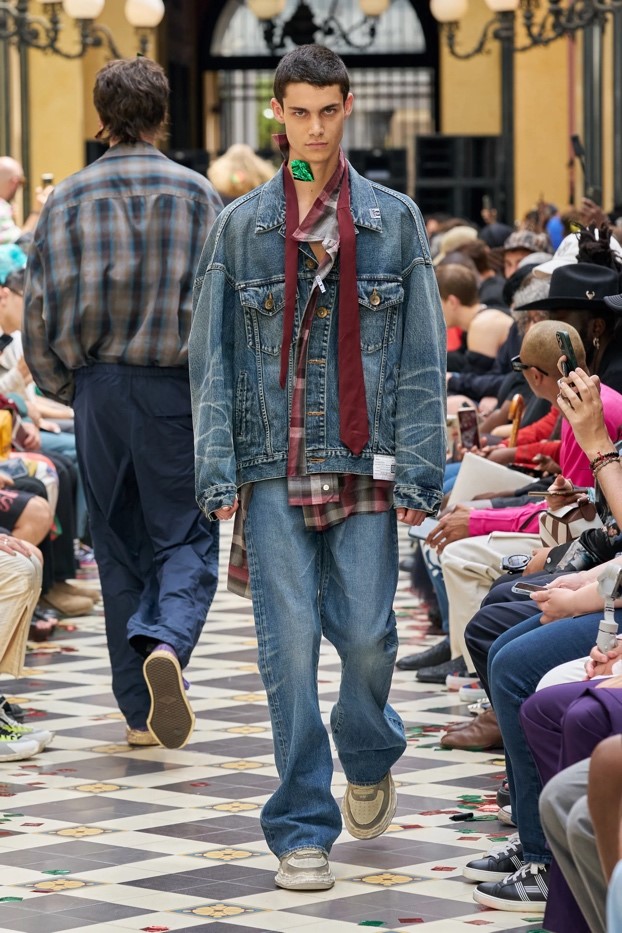
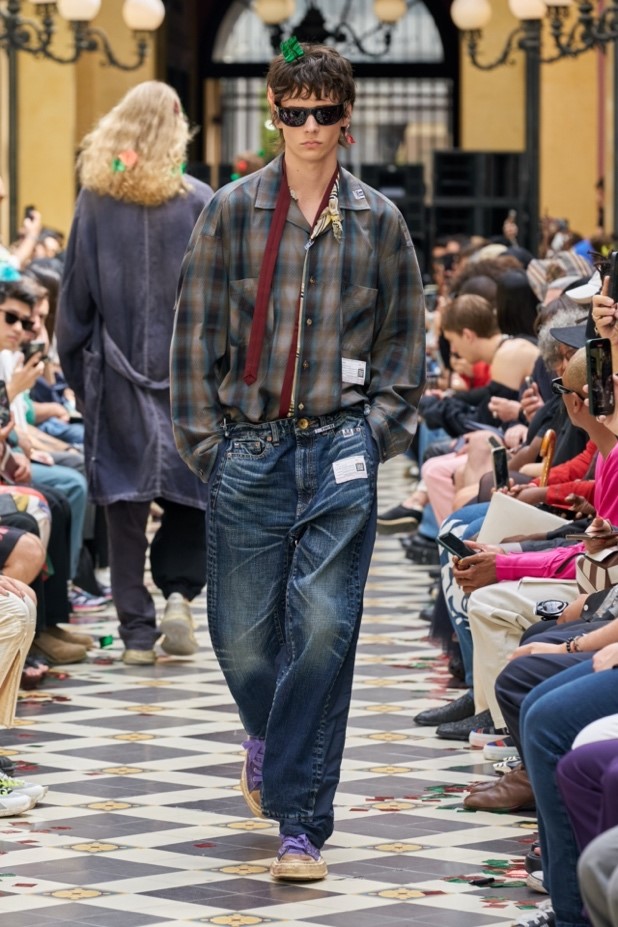
**2022 Maison Mihara Yasuhiro – Fotoğraflar Gorunway'den Daniele Oberrauch tarafından çekilmiştir** Pandeminin başında uzaktan çalışan sayısının aniden artmasıyla birlikte rahat giysiler baş tacımız oldu. Uzaktan çalışmanın rahatlığını tadanlar ofislere dönmek konusunda isteksizdi. Aynı şekilde, Zoom görüşmelerinde sıklıkta tercih edilen rahat kıyafetler pandeminin başında hızla popülerlik kazandı ve özel hayatlarımızdan açık alanlara akarak bizimle kaldı. Bol kesimler de tekrar altın çağını, bir diğer deyişle 90'ların başındaki popülaritesini yakaladı. O zamanlar hip hop trendine yön verenler bol kesim iş kıyafetlerinin şehir merkezlerinden kenar mahallelere yayılmasını sağlamıştı. Doksanların ikinci yarısında ise elektronik müzik ve kaykay parklarıyla bu tarz yeni bir ivme kazandı. Paçalar garip bir biçimde genişledi ve gereksiz kumaş yığınları altında bacakları gizler oldu. Bu genç tüketicileri hedef alan denim tasarımcıları ise sonunda bardağı taşırdı (JNCO belki aklınızda bir şeyler canlandırmıştır). Özellikle de havaya dikilmiş uçları sarı saçlar, şeker ve emzik kolyelerle kombinlenen bu akımın uzun süremeyeceği aşikardı.
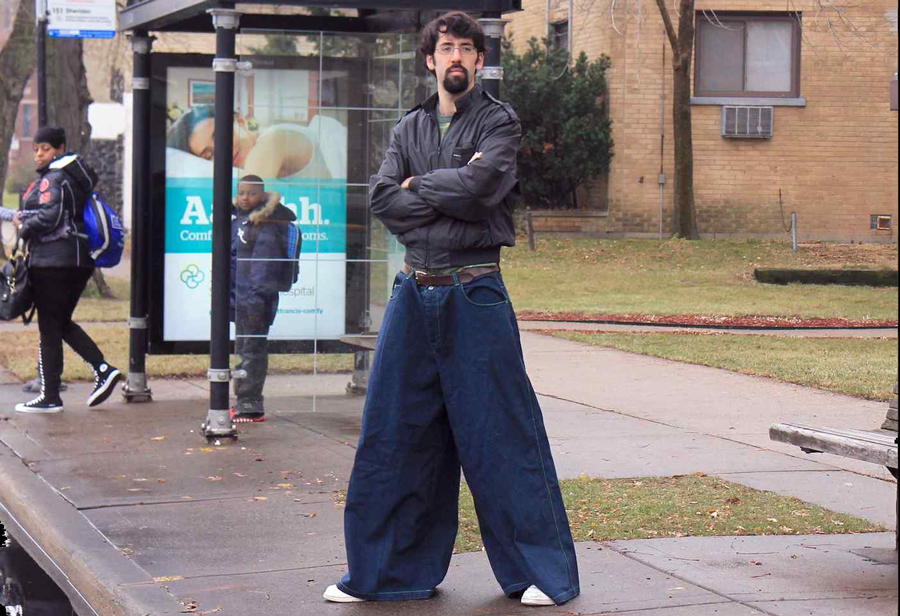
Bazı tasarımcılar peg paraşüt pantolonlarla ve yerleri süpüren geniş pantolonlarla yine sınırları zorlasa da bu stiller pek de beğeni toplayacak gibi görünmüyor (eğer toplarlarsa sözümü geri alırım). Popüler moda mağazalarında sıklıkla görmeye başladığımız şeyler ise tanıdık bir ismin öncülük ettiği bol kesimler oldu. Bu isim de tabii ki New England'dan kolej stiliyle adını duyuran J. Crew oldu. Bundan sadece birkaç yıl önce, 2020'nin Mayıs ayında J. Crew Bölüm 11 kapsamında korunma için federal iflas mahkemesine başvurmuştu. Mali sıkıntılar şirketin başına yıldırım gibi aniden düşmüş de değildi aslında. J. Crew uzun zamandır maddi sıkıntı çekiyor, büyük borçlar altında eziliyor ve giderek azalan ünüyle başa çıkmaya çalışıyordu.
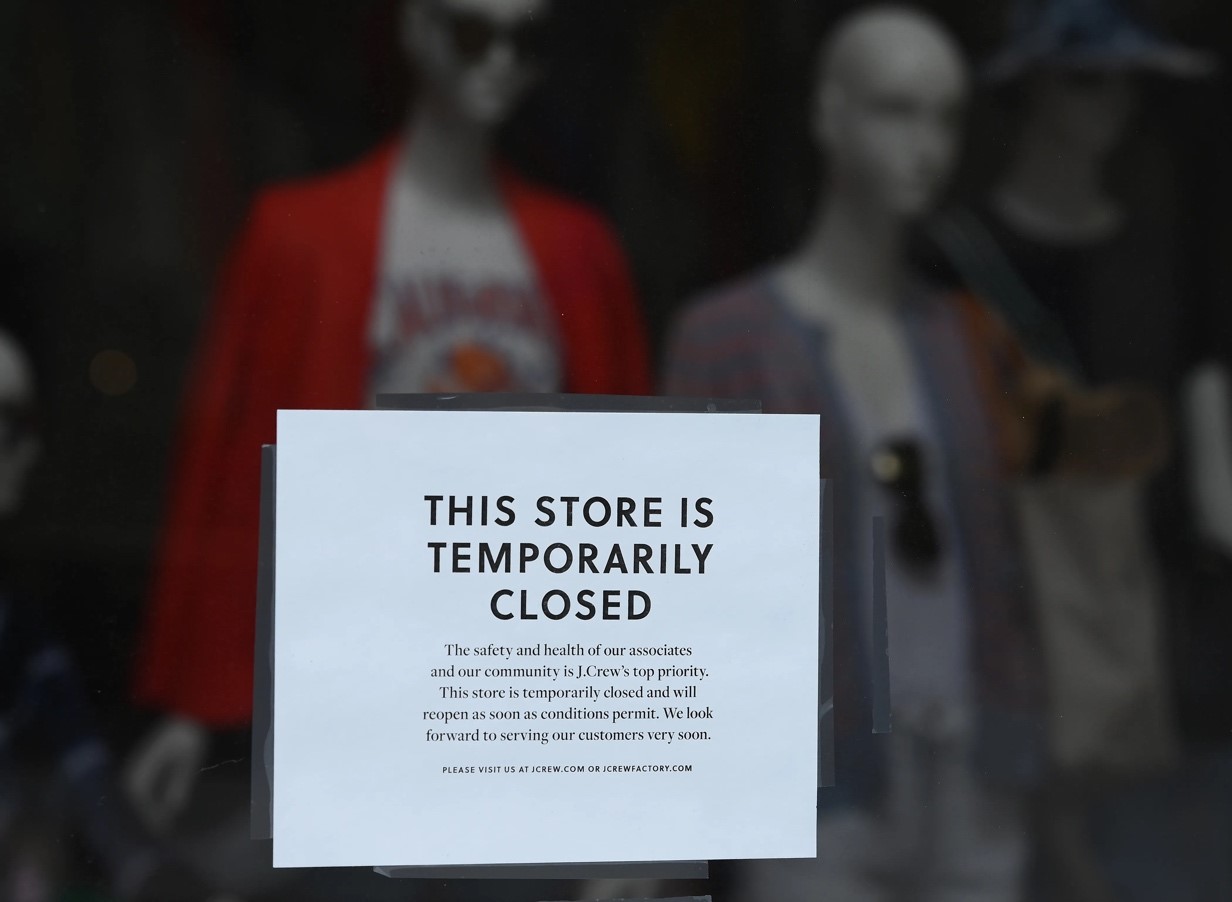
**Fotoğraf Angela Weiss tarafından çekilmiştir** Tüm dünyayı etkileyen pandemi ise onları iflasın eşiğine getirmişti. Bu mali sıkıntılardan kurtulmak için çıktıkları yolda başta kendilerini girintili çıkıntılı bir yerde buldular. CEO James Brett ve baş tasarım yöneticisi Johanna Uurasjarvi önderliğinde insanları markaya çekmeye çalıştılar. Erkek giyimi üzerine yazılar yazan Derek Guy'ın deyimiyle "arşivlerindeki en bol şeyleri" tekrar gün yüzüne çıkardılar ve kıyafetleri daha ucuza satarak dijital ortamda da satış işlemlerini kolaylaştırdılar. Ama hiçbiri işe yaramadı. Uzun süren 16 ayın sonunda Brett ve Uurasjarvi ikilisi şirketle yollarını ayırmak zorunda kaldı ve yeni yüzler markaya katıldı. J. Crew, Erkek giyimi baş tasarımcı pozisyonu için Supreme'in eski kreatif direktörü olan Brendon Babenzien'i seçti. Babenzien'in başarısının sırrı eskiyi tekrar yeni kılabilmesinde saklıydı. "Klasikleri severim. Sadece bir iki sezonluk bir şey tasarlamaktansa onları değiştirmeyi veya daha önce hiç akla gelmeyen şeyleri hayal etmeyi [severim]." diyerek hakkındaki düşüncelerimizi de doğruluyor. Görünüşe göre de (bir zamanlar J. Crew'a para kazandıran) genç ve coşkulu tüketicilere hitap etmek konusunda da olağanüstü bir yeteneği var. Bunu da ilk J. Crew koleksiyonuyla kanıtladı zaten.
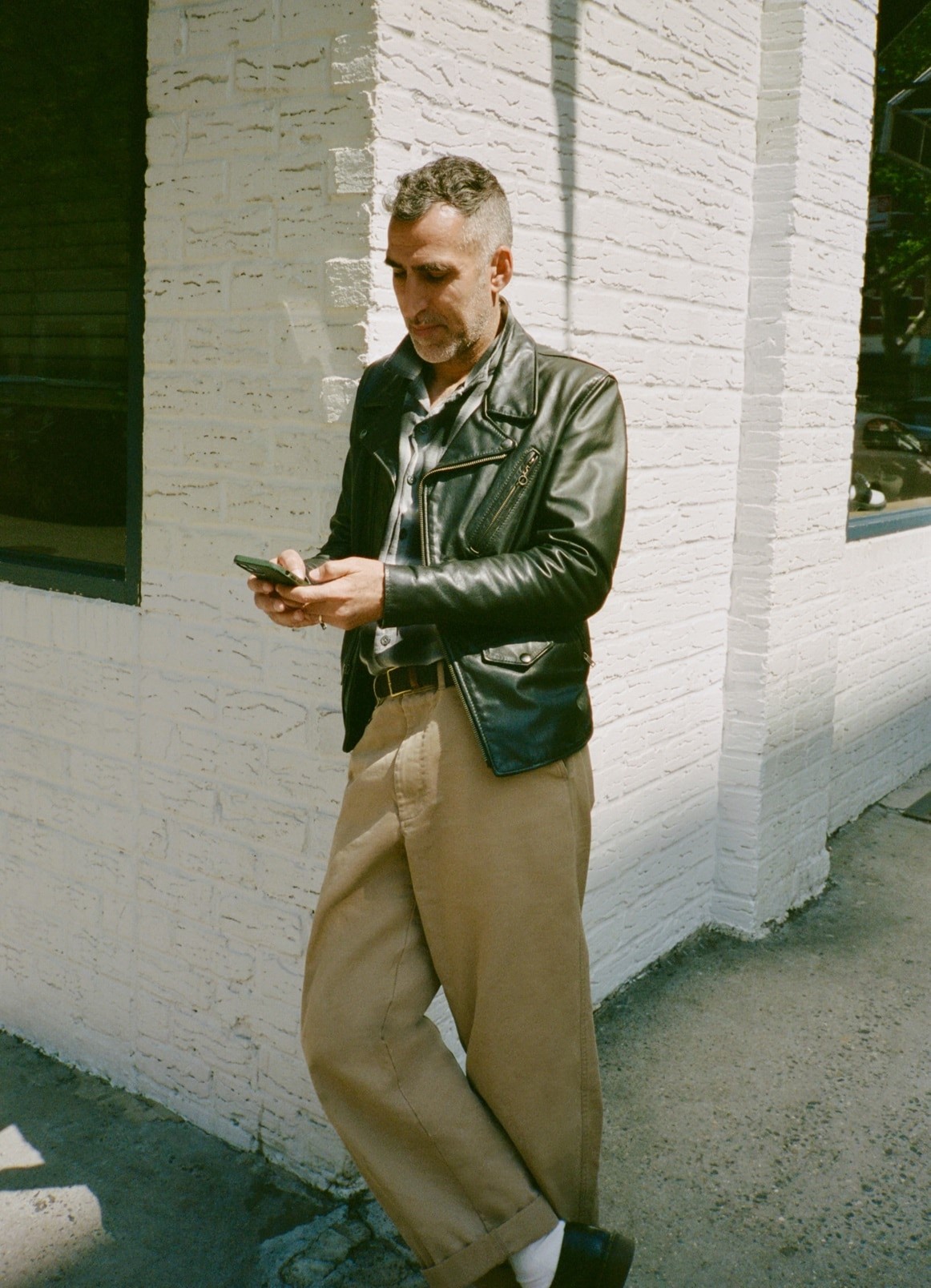
**Brendon Babenzien yeni J. Crew koleksiyonuyla poz verirken** Koleksiyonda en çok dikkat çeken parça ise 90'lardaki bol kesimlerden sonra gördüğümüz en bol ve düz paçaların yanı sıra klasik kesimiyle Büyük Chino Pantolonlar oldu. Babenzien, chino pantolonları J. Crew'un 90'lar arşivinden çıkararak küçük dokunuşlar ve rahat bir kesimle günümüze uyarladı.
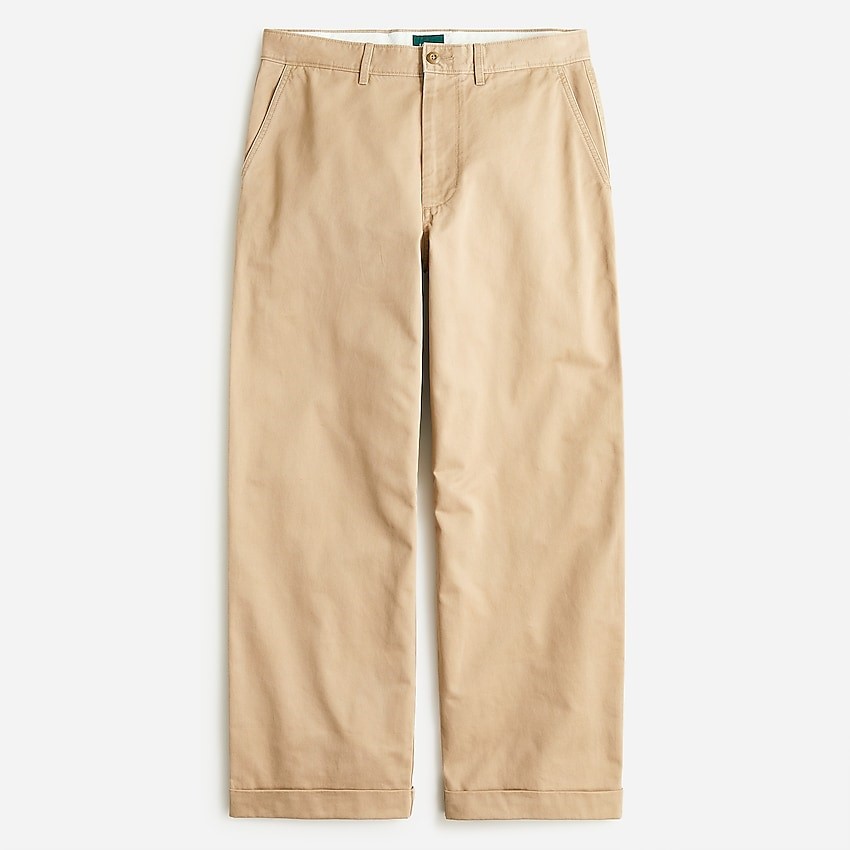
**J. Crew’un Yeni Gözdesi Chino Pantolonlar** Ürünler piyasaya sürüldükleri gibi de satıldı. Aldıkları tepki J. Crew'un beklediğinden çok daha iyiydi, bu da daha bol ve daha rahat kesimlere gösterilen ilgiyi ortaya koydu. Bu talep gittikçe de büyüyor. Sadece marjinal kesimler ve genç moda alt kültüründe değil, modern ve yetişkin erkek stilinde de bu talebi görebiliyoruz. Babenzien'in desteğiyle J. Crew bu orta pazara erişme fırsatına erişti. Erkek giyim dekoltesi sınırlarında başarıyı ve markalarında rönesans çağını yakaladılar. Bir yanda AVMlerin aynı mağazaları diğer yanda ise zor beğenen tüketicilerle dolu karmaşık ve coşkulu bir pazar vardı. J.Crew ise Aimé Leon Dore gibi şık iş kıyafeti markalarının bölgesine giriş yaptı ancak çok daha cazip fiyatlarla.
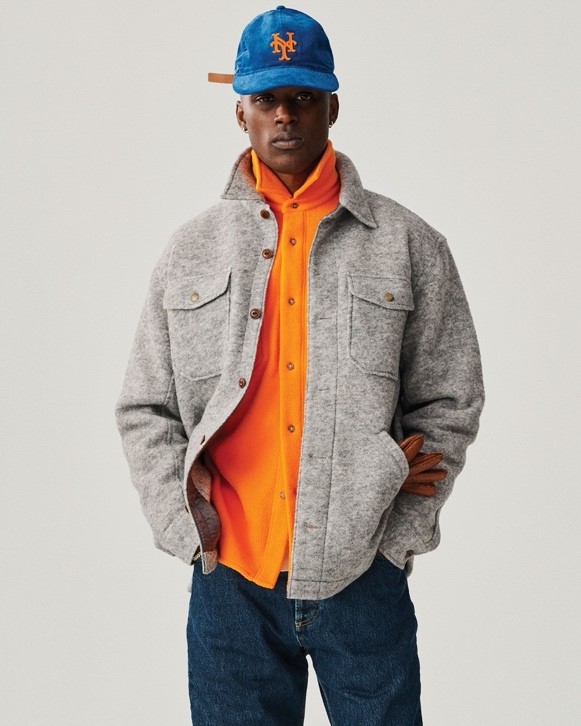
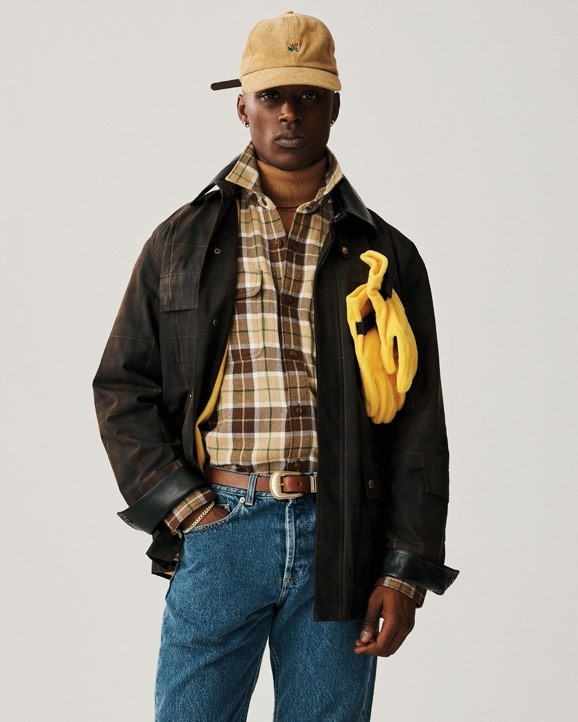
**Aime Leon Dore'nin Moda Haftası 22 Kıyafet Kataloğundan New England iş kıyafetleriyle oluşturulan tarzlar** Geçmişe değer vererek bol paça vintage ürünleri her zaman el üstünde tutan denim markaları için bu iyi haber oldu. Babenzien ve J. Crew pazarda yeni bir alan yaratmadı ancak var olan bir ihtiyacı karşılamanın yolunu buldu. Bol paçalara gösterilen ilginin ne kadar süreceği ya da bugün var yarın yok trendlerine dönüşüp dönüşmeyeceği belirsiz. Ancak değişim rüzgarını hızla yakalayan denim markaları trendlerle birlikte başarıyı da yakalayacak demektir.

**Full Count'tan 0105** Tabii bol kesimlerin tekrar gün yüzüne çıkması düz ve daralan kalıplarla ünlenen markalara bir tehdit oluşturmuyor. Erkek giyim ve denim pazarları bu değişimden de güçlü çıkacaktır. Geniş kesimler sokak modasına yeni bir soluk kazandıracak ancak daha dar kesimleri piyasadan silmeyecek. Sadece şimdi onların rüzgarı esiyor. Bunun bu rüzgarın sezon boyunca veya önümüzdeki yıllarda da devam edip etmeyeceğini ise birlikte yaşayıp göreceğiz.
To view full content and a better mobile experience, try

